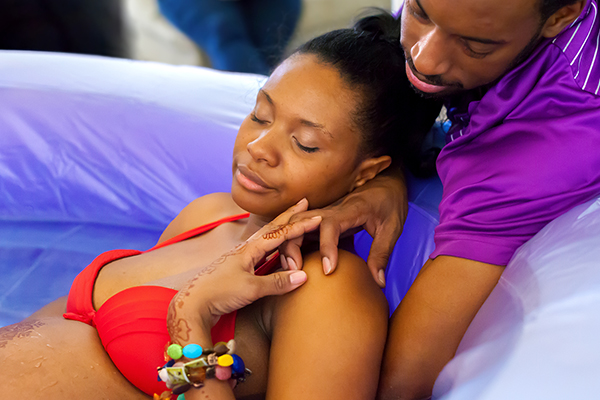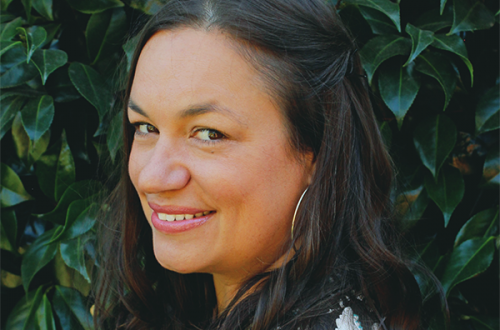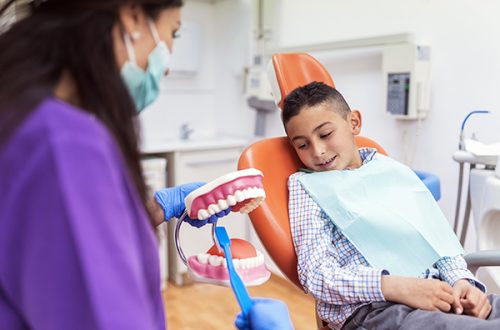
Birth Happens
by Laura Maxson, LM
Shared experiences help us understand our world. Local midwives have committed to sharing their combined wealth of knowledge and history around childbirth. “Our efforts are focused on highlighting midwifery and homebirth,” says midwife, Elizabeth Yznaga. She and Kate Bowland, both highly experienced certified nurse-midwives, are partners in the Birth Happens project.
The influence of homebirth and midwifery changed obstetrics in the U.S. due in part to the courage of the women and families of the San Lorenzo Valley. They were pioneers in bringing birth back home, while reinventing childbirth education and attending births as midwives. Birth Happens puts a spotlight on local history with this exhibit while working toward a national exhibition at the Smithsonian honoring the beauty and power of birth, covering homebirth history and art, as well as legal issues. Documenting women’s work is important.
The Birth Happens exhibition at the San Lorenzo Valley Museum in Felton is a rare opportunity to explore the unique role the Santa Cruz area has played in childbirth history. This exhibit will be a stroll down memory lane for some, and for many others it will be an eye-opening peek into a little-known and underappreciated past. The exhibit is open now through January 2022, with a grand opening reception on Sunday, Oct 3 from 1-4 pm that includes special guests and festivities.
Historically, childbirth was a community-supported, family-based experience. The Birth Happens exhibit provides glimpses into local history beginning with the wisdom of local indigenous people’s practices around pregnancy and birth. Many birth practices today stem from ancient beginnings. Interviews with elders of the Mutsun and Rumsen Ohlone people were the basis of material shared.
The move from community-based birth to birth as a medical event followed the eradication of midwives in the early 1900s. Midwifery was discouraged as doctors took over childbirth and eventually moved birth from home to the hospital. This concerted effort by the medical profession resulted in an end to midwifery as a legal profession for decades.
An unfortunate era of extreme medical domination with the relinquishment of autonomy around birth was ushered in with “twilight sleep,” a labor medication that necessitated the use of leather straps to tie women to their beds in labor. More often than not, drugged babies pulled from unconscious bodies with forceps became the norm. Newborns then experienced hours to days of separation in the nursery, contributing to dismal breastfeeding rates.
Santa Cruz was no exception to this over medicalization of childbirth, but was on the cusp when it came to fighting for the right to give birth awake and aware, in their full power. The exhibit documents one family who gave birth at home in the Santa Cruz mountain community of Brookdale in the early 1960s, which immediately kindled interest from others hoping to avoid hospital birth restrictions. Information and experiences were shared in the community and families responded. Birth at home was gaining popularity and midwifery began to reinvent itself, underground.
In 1972, Celeste Philips, RN, and Dr. Joseph Anzalone attended the Birth Seminar in Ben Lomond put on by underground midwives and homebirth families. Inspired by what they learned from these self-made midwives, they began to change hospital practices. One of these self-made midwives, Raven Lang, is highlighted in the exhibit as the author of “The Birth Book,” one of the first natural childbirth books focusing on homebirth midwifery.
From these first few homebirths came a midwifery school and birth center providing prenatal care and support for homebirth. After an undercover sting operation, members of the birth center were arrested and taken to court in 1974. Kate Bowland and others were charged with practicing medicine without a license. The California Supreme Court made the final decision, dropping the charges while suggesting a legislative remedy – get licensed.
It was the push needed to finally enact the Certified Nurse Midwives (CNM) Act in late 1974. Midwives who wanted to practice homebirth legally had to become CNMs, which is what Kate and others did. At the same time, other underground “lay” midwives worked on legalizing homebirth midwifery as a license separate from CNM. The California Association of Midwives and others worked hard to get legislation passed in California to create a pathway for Licensed Midwives (LM) in 1993.
Midwives currently provide birth services in homes, a free-standing birth center, and all three hospitals in Santa Cruz County.
Birth Happens – Thursday, Saturday, Sunday 1-4pm, Friday 4-7pm
San Lorenzo Valley Museum, 6299 Gushee St., Felton, CA 95018
Reception – Sunday, Oct 3, 1-4pm
Birthnet.org – Listing of homebirth midwives


You May Also Like

Spooky Winners
October 28, 2021
Dana Ramsey
September 30, 2021

